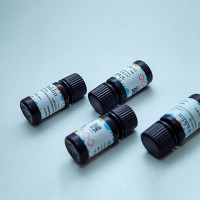Experimental Control and Characterization of Autophagy in Drosophila
互联网
420
Insects such as the fruit fly Drosophila melanogaster , which fundamentally reorganize their body plan during metamorphosis, make extensive use of autophagy for their normal development and physiology. In the fruit fly, the hepatic/adipose organ known as the fat body accumulates nutrient stores during the larval feeding stage. Upon entering metamorphosis, as well as in response to starvation, these nutrients are mobilized through a massive induction of autophagy, providing support to other tissues and organs during periods of nutrient deprivation. High levels of autophagy are also observed in larval tissues destined for elimination, such as the salivary glands and larval gut. Drosophila is emerging as an important system for studying the functions and regulation of autophagy in an in vivo setting. In this chapter we describe reagents and methods for monitoring autophagy in Drosophila, focusing on the larval fat body. We also describe methods for experimentally activating and inhibiting autophagy in this system and discuss the potential for genetic analysis in Drosophila to identify novel genes involved in autophagy.






